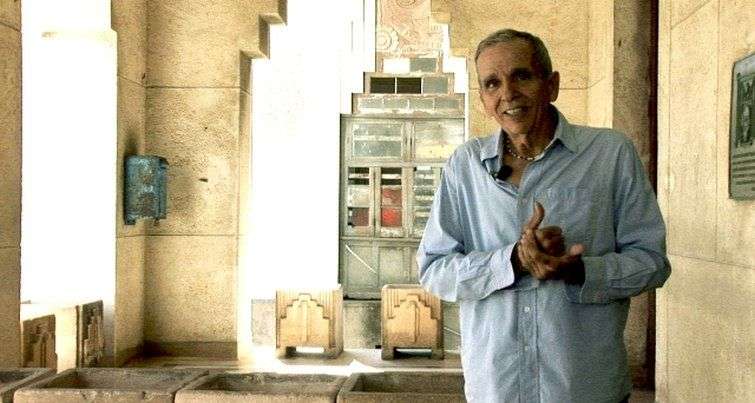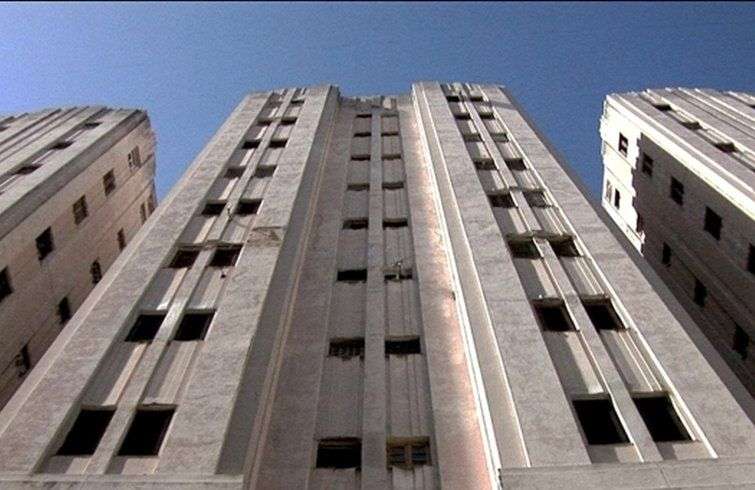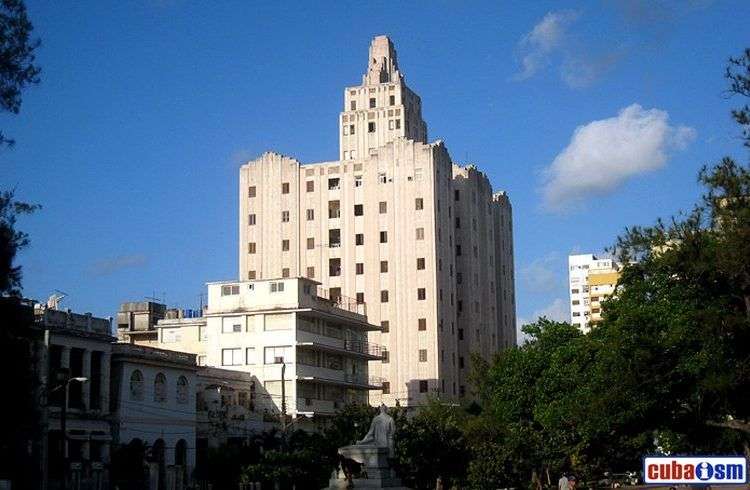At the corner of L and 13 of Vedado, a sui generis building that bears some similarities to the New York Empire State draws people´s attention. I am talking about the Lopez Serrano building built in 1932 by the Watch and Rosich firm, with a total of 78 apartments. The younger brother of the Empire State, closely resembles him in his design, but only has ten floors and four more in the tower. It is one of the buildings representative of Art Deco in Cuba.
As in recent decades has not undergone any renovation, the passage of time begins to become apparent in him. Even from afar, which was considered for a while as the tallest building in the country, it retains its image of excellence with its steel structure, just do a close up with to appreciate the destruction of some of its decorative elements as well as the state found in windows and balconies.
Under the name López Serrano Salvarte … people have been working since October 2014 on a project of cultural socio-economic rehabilitation, with citizen participation in this residential building of high heritage value.
This proposal, currently under development, was presented as class work by a group of students from the Faculty of Architecture of the University of Havana led by architect Professor Juan García Prieto.
For its implementation they will use the knowledge of Enterprise Project Design Havana (DCH) and especially of the architect Félix Torres. Furthermore, the project will involve the People´s Power, Investor Provincial Housing Unit (UPIV) and the Provincial Party.
The provincial government has set an initial budget of millions of pesos to start the restoration work but much more money will be needed because it requires brigades and specialized teams of hydraulic, automatic, electrical engineers, and others to return the splendor to the property. Among the aims is that after the renovation the lobby it is as close as possible to how it looked when the building was opened.
The strength of the image
During the completion of the XII World Congress of Art Deco -held between March 14 and 21, 2013 in Havans, The Deconstruction documentary by filmmaker Sara González Vega was screened at the headquarters of the National Union of Writers and Artists of Cuba (UNEAC).
The screening took place well within the day for the day of Cuban architect and had a massive participation of neighbors of the Lopez Serrano building. Both events served as a trigger for returning the looks at this great exponent of Art Deco. Exclusive to OnCuba, architect Juan García Prieto gave details of the project to restore the Lopez Serrano building:

“At the end of the projection one of the neighbors took the floor and said that if they were still waiting for a budget to restore the building was going to fall over and suggested that tenants join forces and resources in order to achieve the common goal. We hear their proposals and promised to provide assistance, which could be channeled through the social practice of architecture students.
“So, ten students accompanied me to the López Serrano. Here we joined the will of the people of wanting to save their building. We begin to know and appreciate the problems and the end of the two weeks of social practice we linked to the DCH Company.
“Lázara Mercedes López Acea, first secretary of the Provincial Party in Havana and Vice President of the Council of State and Ministers, stated that there was an interest from the government to rescue this building. We screened the documentary again. The highest levels of the country had already seen because previously its director sent several copies to the Central Committee of the Party. The strength of the image moved all those springs. ”
What background did you have to introduce the topic of citizen participation in the rehabilitation project of the building?
One of the fundamental backgrounds was the article titled Havana An impossible equation? By sociologist Carlos García Pleyan who states that: “We must rethink the relationship between government and citizens and to introduce participatory planning and budget.”
The concrete proposal we made was to incorporate new uses in public and private areas of the building to generate funding and tourist exploitation of historical-cultural values of the property as another source of income. In that sense, the possibility of using the roofs and verandas are raised, charge tickets to tourists and those utilities use them to rescue the building and improving the quality of life of its inhabitants.
This requires to declare the property as a Monument and insert it in the program-Cultural Tourist Route (Ruta HabanaDeco). Nor can we forget the historical value of the property where the Party of the Cuban People (Orthodox) was founded in the apartment of Eduardo Chibas and where great personalities of Cuban culture have resided. ”
What stage is the project?
After Lazara Mercedes Lopez Acea learnt of our proposal she said it was fine but we should see how to organize this pilot then extend it to other buildings.
When students began the fifth year, we got the project approved as final workshop of the course design titled Comprehensive Rehabilitation, with a participatory budget from the building. We work a full semester project, which finally 22 students joined.
A local lobby was enabled as a classroom for surveys and learned all the needs for rehabilitation among which are the hydraulic and electrical systems, doors and windows of the building, aesthetic and environmental elements of Art Deco. The students found the original plans in the National Archives of Cuba. All information is carefully processed, which was recognized by the company DCH.
Do you think that this work has helped to heighten the sense of belonging to the inhabitants of the building?
After the project was introduced we achieved to restructure the board of residents with a representation of youth and internal regulations. They are taking care of registering the building in the Land Registry for legal guidance in order to implement the new measures funding from Own Buildings Policy Management, Resolution 4-91 of the National Housing Institute. This Multifamily Building Regulation protects the neighborhood committee to create a common bank account.
The neighbors have many ideas for change of use and rental of premises: build gyms, hairdressers, cafes, restaurants, shops regain the ground floor, a museum of tangible and intangible history of building models, photos and regain the apartment of leader Eduardo Chibas. From the results of this experience, we make another project for citizen participation, with architecture students in a disadvantaged neighborhood of the capital.











